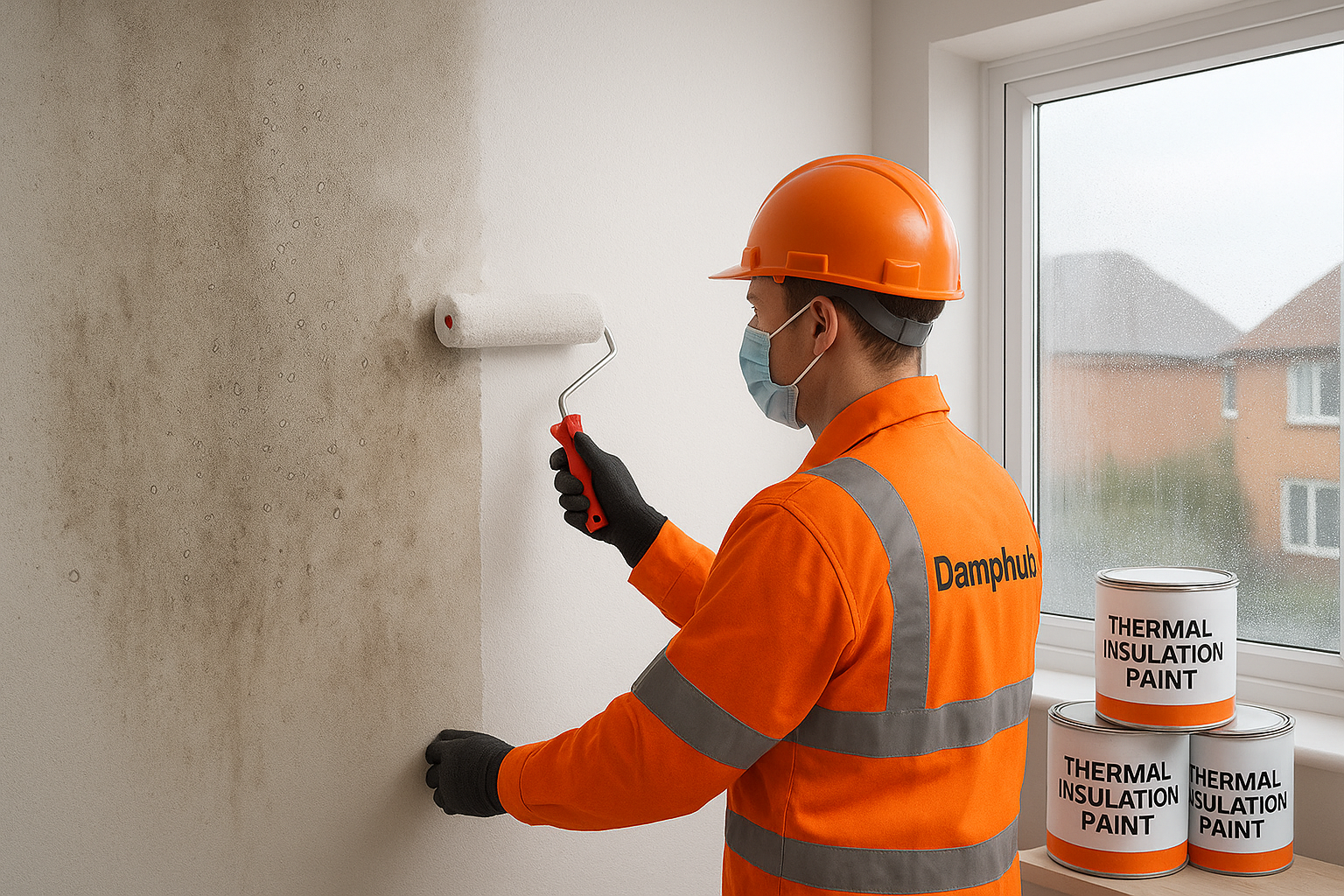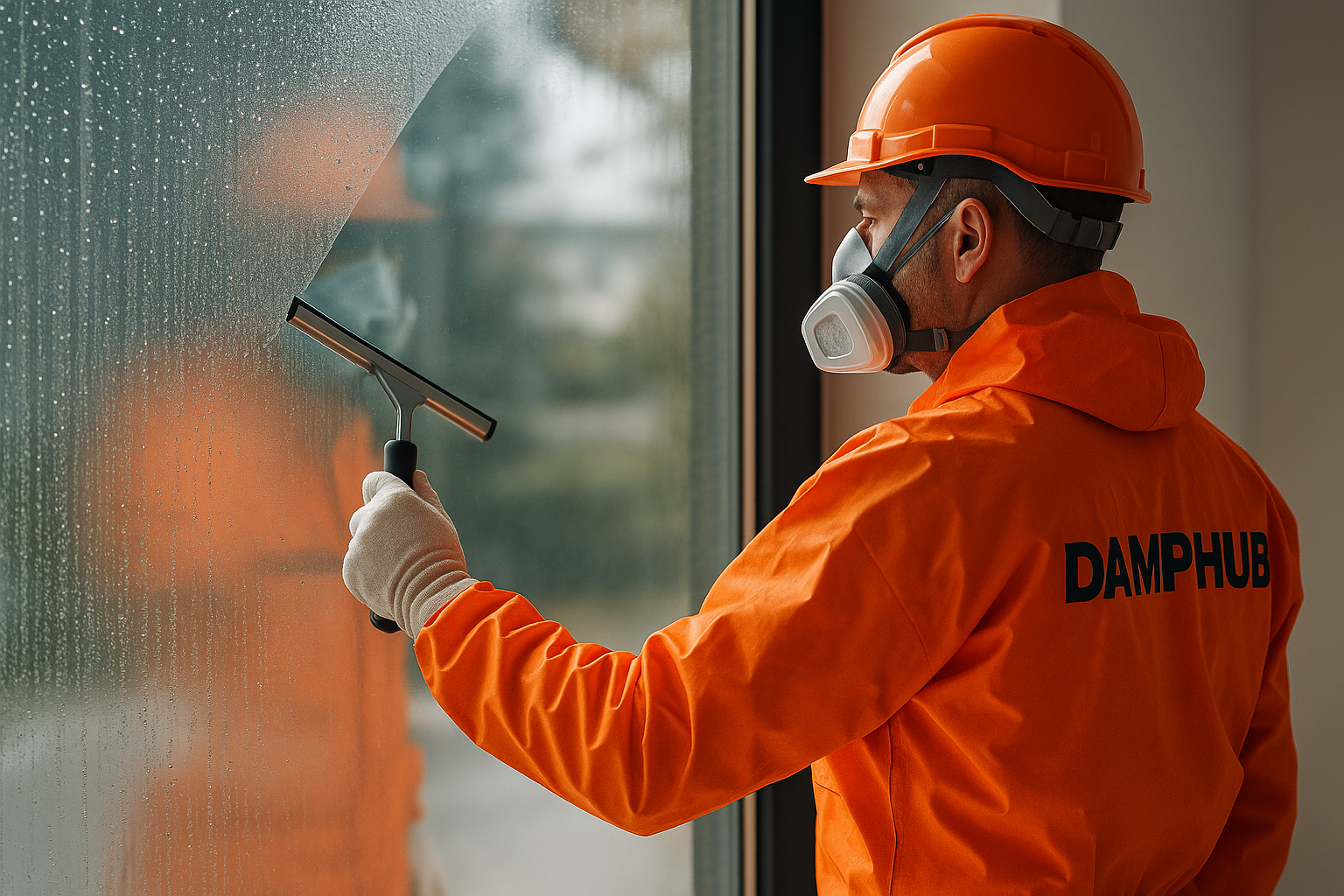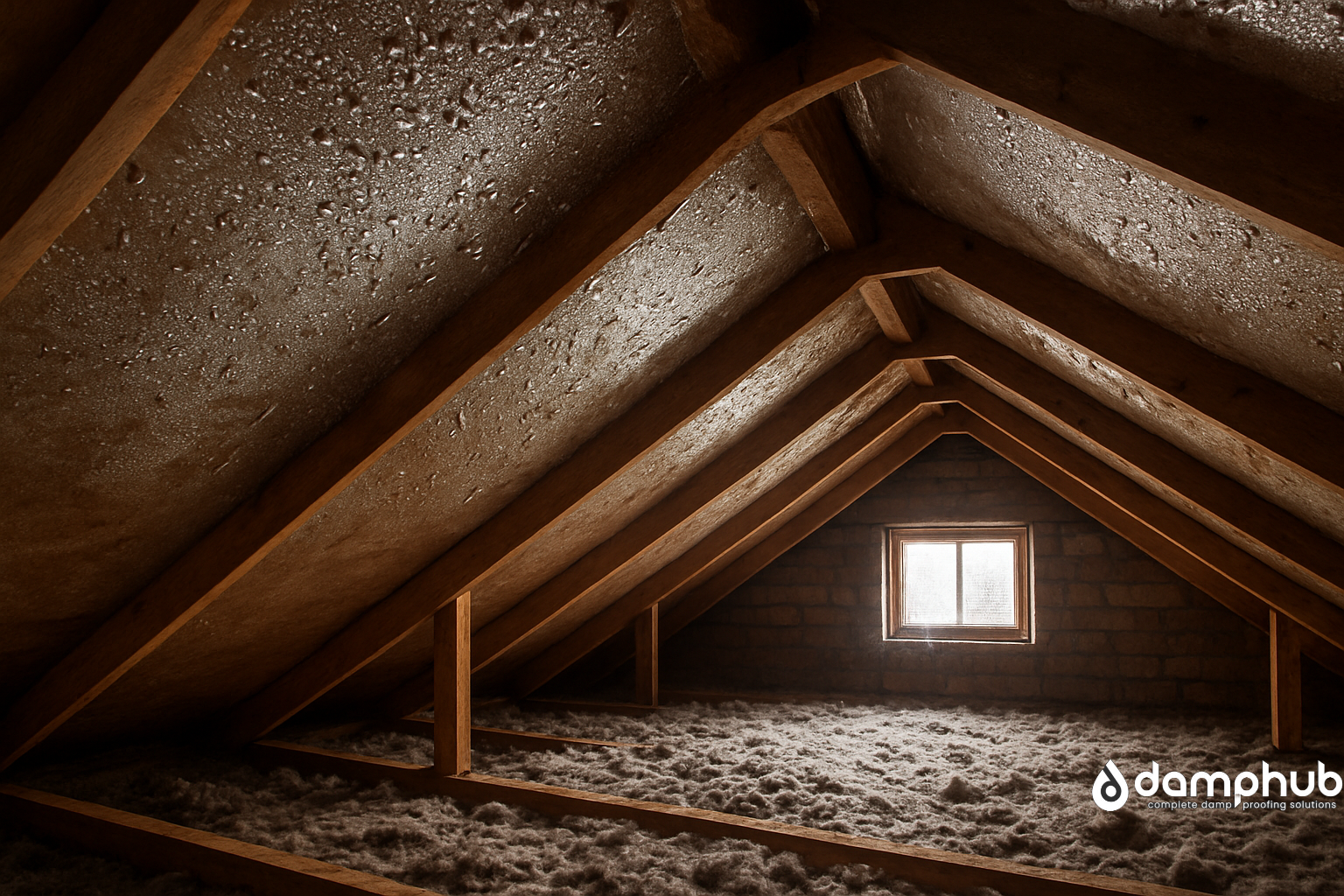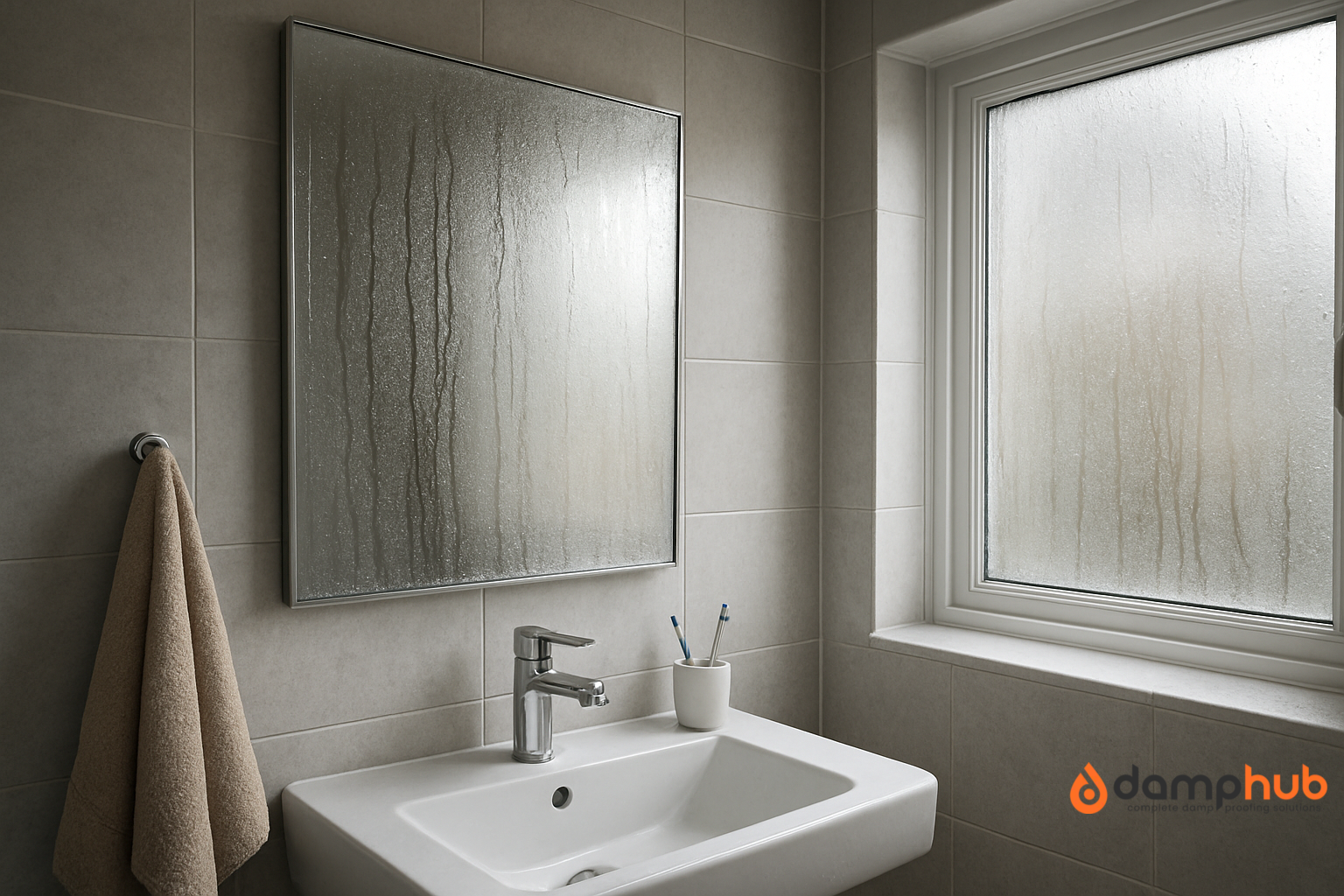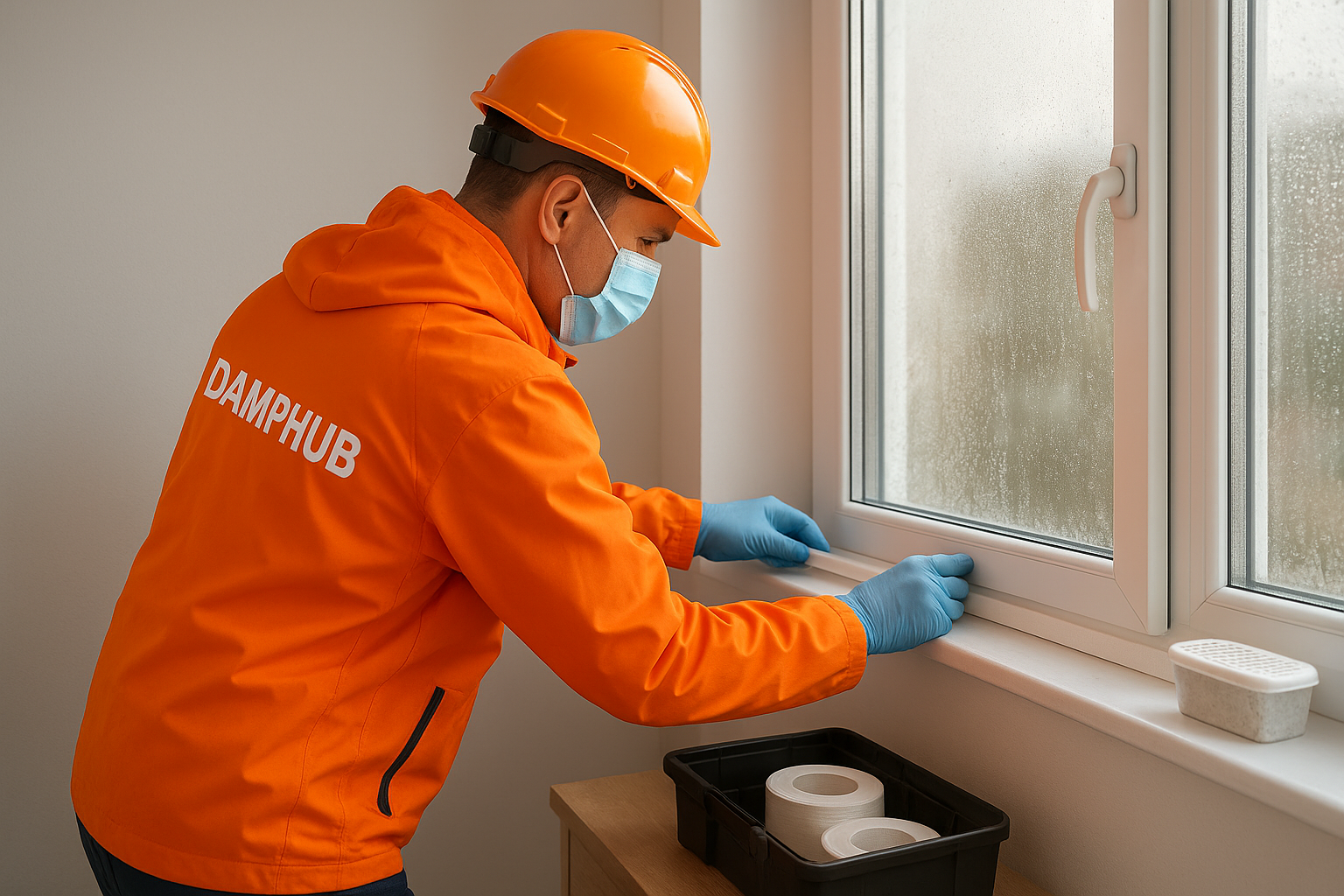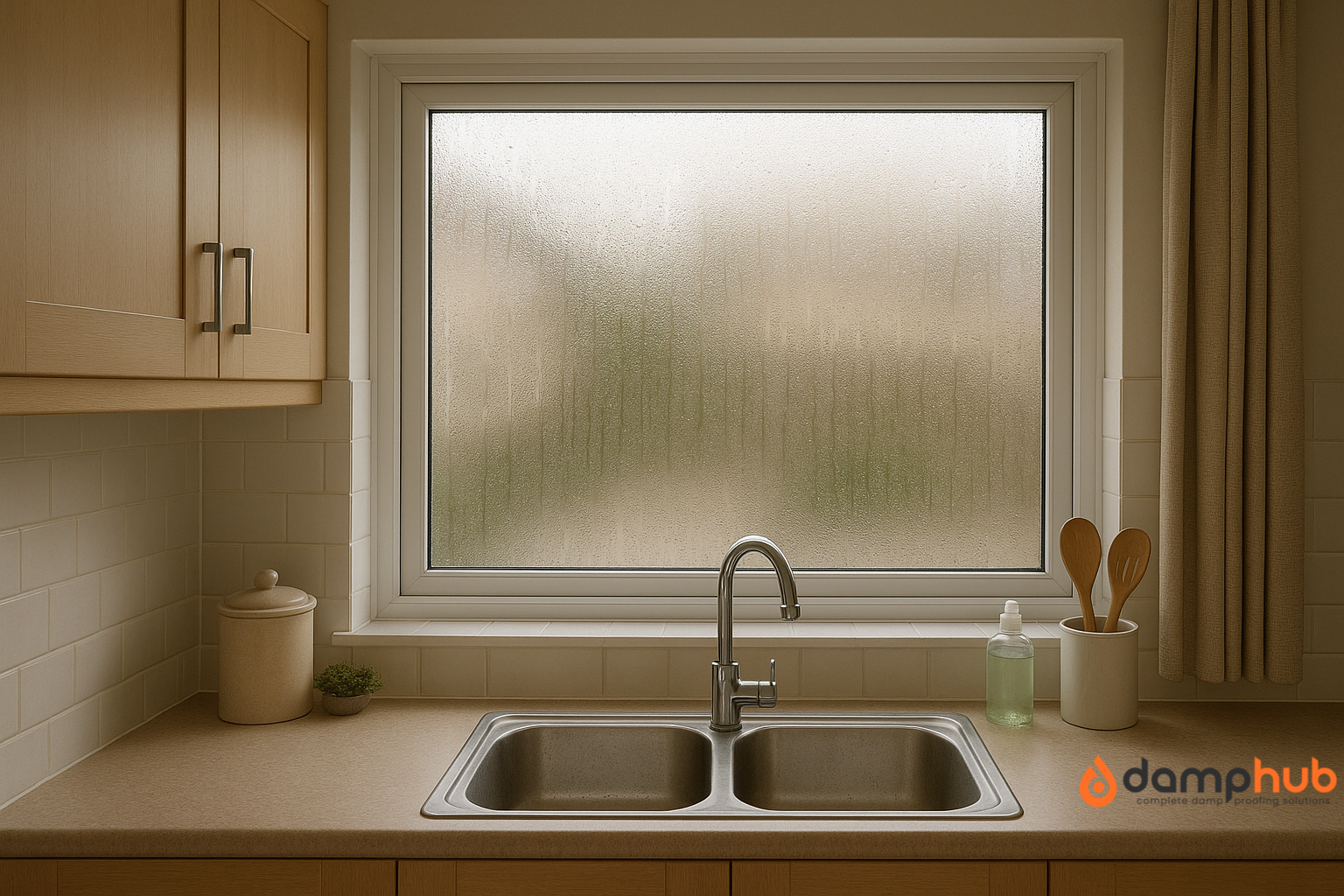
The kitchen should be the heart of the home, but for many UK households, it’s also the dampest room in the house. Steam from boiling pans, splashes from washing up, and even the humble kettle can all add to the moisture in the air, leaving windows streaming and walls damp to the touch.
A little condensation in kitchen might not seem like much, but over the long haul, it can peel paint, damage cupboards, and even trigger mould growth that’s harmful to live with. The good news? You don’t have to just put up with it. This guide breaks down what kitchen condensation really is—and how you can keep it under control before it causes lasting problems.
Why Is There So Much Moisture In My Kitchen?
You might be wondering, what causes condensation in a kitchen? The answer is straightforward: everyday activities release a surprising amount of water vapour that condenses back in your kitchen. For instance, according to the South Tyneside Council:
- A bath or shower can add 2 pints
- Drying clothes indoors can add 9 pints
- cooking and the use of a kettle can add 6 pints
- washing dishes can add 2 pints
- A bottled gas heater (8 hours of use) can add 4 pints
When that warm, moist air drifts onto a cooler surface, such as a window, tiled wall, or ceiling, it instantly condenses into droplets. That’s the condensation you see forming.
The issue worsens if your kitchen lacks adequate ventilation. Without fresh air to carry the moisture out, it simply lingers, settling on cupboards, walls, and ceilings until damp patches and mould start to appear.
Good To Know
Condensation doesn’t always mean you’re producing too much steam. Often, it’s that the steam has nowhere to escape. Improving ventilation usually makes a bigger difference than cutting back on cooking.
What Are The Visible Signs Of Condensation In Kitchen
Sometimes the signs are glaring, like fogged-up windows that drip onto the sill. Other times, condensation creeps in quietly until you notice a patch of mould behind a cupboard or a musty smell when you open a drawer.
Here are the most common red flags for kitchen condensation:
- Steamy windows with water trickling down.
- Peeling wallpaper or paint, bubbling on the walls.
- Damp patches behind units or inside cupboards.
- Black mould spots around window frames or on ceilings.
- A stale, damp smell that lingers in cupboards or drawers.
If you spot these signs, it’s worth acting quickly because condensation can turn a fresh kitchen into a damp, unhealthy space.
How To Stop Condensation In Kitchen When Cooking
As expected, cooking should fill your home with good smells, not damp patches and dripping windows. Yet for many households, the kitchen is the main source of excess moisture. The good news? Here are a few simple habits that can cut condensation right down while you’re cooking:
Use Ventilation Properly
Turn on your extractor fan before you start cooking, not halfway through. Keep it running for at least 10–15 minutes after you’ve finished. If you don’t have a fan, crack open a window to give the moisture a route to escape.
Cover Pans
Keeping lids on pans makes a bigger difference than most people realise. Every time you boil or simmer without a lid, steam escapes and clings to windows, cupboards, and walls. By keeping pans covered, you trap that moisture, cut condensation, speed up cooking, and save energy, all in one simple step.
Keep Kitchen Doors Shut
If you are still asking for more ways on how to stop condensation on kitchen walls in winter, here’s a simple one: keep your kitchen doors shut. Closing the door while cooking traps the steam in one space and stops it from drifting into colder rooms, where it would quickly settle on walls and cause damp patches.
Related reading: How to Stop Condensation Altogether: 7 Proven Methods for UK
Pro Tip
Upgrade your extractor fan to one with a humidity sensor. It will automatically switch on when steam builds up and stay running until the moisture clears, saving you from constantly remembering to turn it on.
How To Stop Condensation In Kitchen Cupboards
Cupboards often hide condensation problems until it’s too late. You open the door one day and find damp food packaging, warped wood, or mould creeping along the back panel.
The issue is poor airflow. Cupboards, especially those against cold walls, trap warm air that condenses on the cooler surface.
To tackle condensation in kitchen cupboards, observe the following:
- Don’t pack cupboards too tightly. Leave room for air to flow freely.
- Leave doors slightly open regularly to let in fresh air.
- Use moisture absorbers or silica gel packs.
- If the cupboard backs are thin and pressed against an external wall, consider insulating them.
How To Stop Condensation Under Kitchen Sink
You might be wondering, what causes condensation under kitchen sink areas? Most of the time, it’s simply cold water pipes meeting the warmer air inside your home. When the warm air touches the cooler pipe surface, moisture turns into droplets that drip onto the cupboard base. With poor airflow and the odd leak, this space quickly becomes damp.
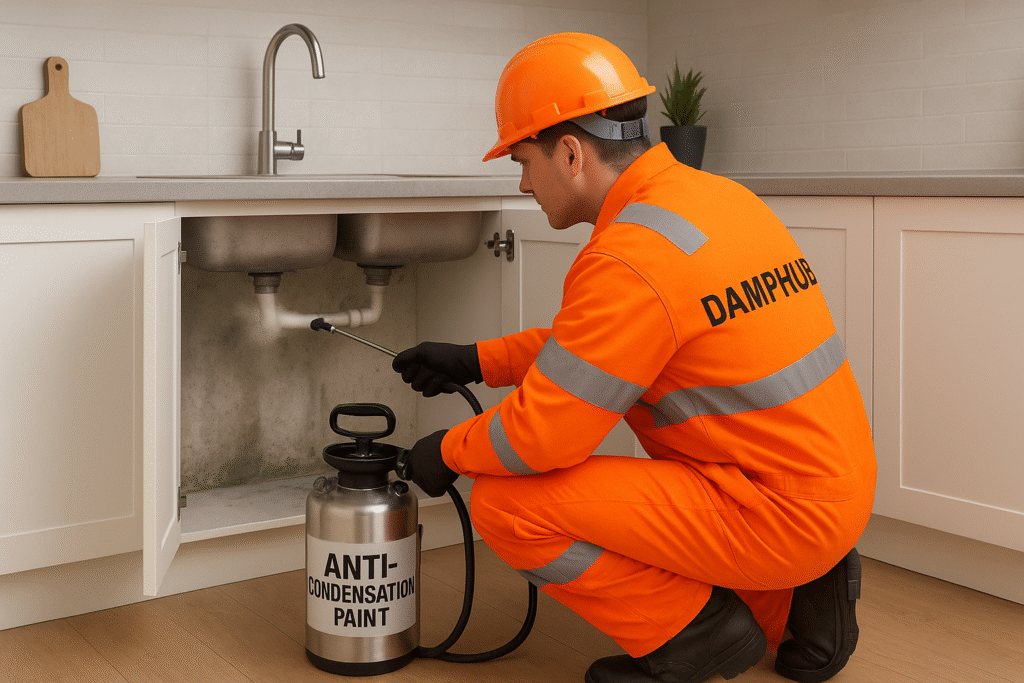
Here’s how to deal with kitchen condensation under the sink:
- Raise cleaning bottles and supplies off the base with a small rack.
- Wrap insulation sleeves around cold pipes.
- Check for drips and seal leaks straight away.
- Leave cupboard doors open now and then to let the area dry out.
Try This
Place a bowl of baking soda or rock salt under the sink. Both naturally draw out excess moisture and help keep the space dry between clean-ups.
How To Stop Condensation Behind Kitchen Units
Other than the kitchen cupboards and under the sink, the area behind the kitchen units is one of the trickiest spots. Why? Because in these areas the air circulation is poor, so moisture builds up in the cold void between the wall and the cupboard. You might not notice until mould stains the wall or the unit starts to swell.
To prevent this:
- Leave a small gap between units and the wall during installation.
- Add discreet ventilation grilles to plinths or side panels so air can move.
- Use a dehumidifier in the room if the whole kitchen feels damp.
- Check behind units every few months for damp spots.
How To Stop Condensation In Kitchen Walls
Walls are prime targets for condensation. Steam from cooking or dishwashing rises and lands on them, especially if they’re cold external walls. Over time, this can leave them stained, damp, or mouldy.
Ways to reduce condensation in kitchen walls include:
- Using moisture-resistant paint on problem walls.
- Adding internal insulation boards to cold external walls.
- Keeping furniture and units slightly away from walls so warm air can reach them.
If mould has already appeared, clean it with an anti-fungal solution, not just soap and water. Once treated, repaint with anti-mould paint to stop it returning.
How To Stop Condensation On A Kitchen Ceiling?
Ceilings are often overlooked, but steam naturally rises, making them one of the first areas to show black mould spots. Corners above cookers are particularly vulnerable, but don’t panic yet, as you can do the following to lessen kitchen condensation in the ceiling:
- Ensure you invest in a powerful extractor fan to pull steam upwards.
- Consider fitting a ceiling-mounted vent above the cooking area.
- Repaint with anti-mould ceiling paint after treating existing stains.
Final Thought
Condensation in the kitchen can feel relentless, but it’s not something you have to put up with. Simple changes—like adjusting cooking habits, improving ventilation, and keeping an eye on hidden spots—can make a real difference. The key is consistency: deal with moisture under sinks, behind units, on walls, and in cupboards before it has the chance to spread.
At the end of the day, kitchens will always produce steam; that part is unavoidable. What matters is how you manage it. With the right steps, you can stop everyday moisture turning into lasting damage or a risk to your health. But if the problem keeps coming back, talk to our Damphub experts for a lasting fix.
Answering Frequent Questions About Condensation in Kitchen

-
What Is An Example Of Condensation In The Kitchen?
Steam from boiling water hits a cold kitchen window. The glass fogs up, droplets form, and eventually they trickle down.
-
How Do I Stop My Kitchen Windows From Steaming Up?
Switch on the extractor fan, keep lids on pans, and open a window slightly while cooking.
-
Can Condensation In The Kitchen Cause Mould?
Yes. Cupboards, walls, and ceilings are common places where mould grows if condensation isn’t managed.
-
Why Do My Kitchen Cupboards Feel Damp?
Because moisture gets trapped inside, especially against cold external walls with little airflow.
-
Is Condensation Worse In Winter?
Definitely. Cold surfaces indoors attract more moisture when warm, steamy air hits them.
-
Can A Dehumidifier Help In A Kitchen?
Yes, especially in older homes or small kitchens where moisture builds up quickly.

